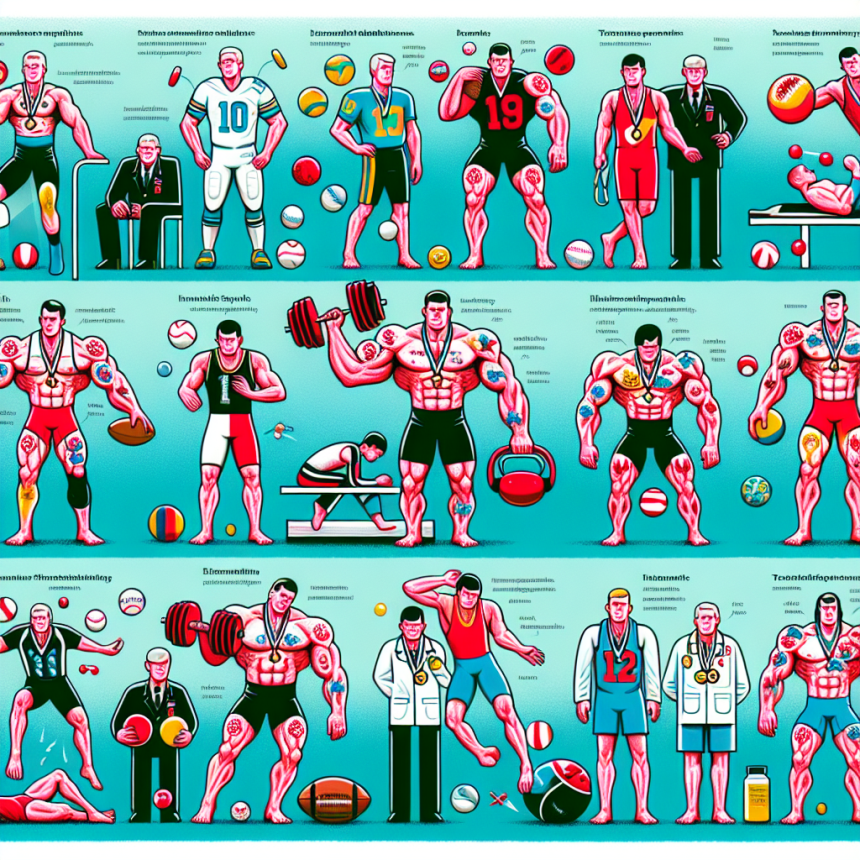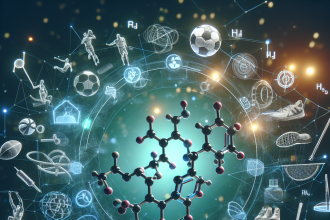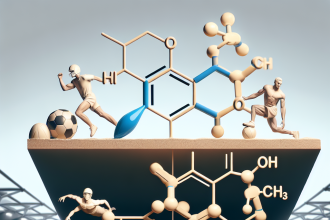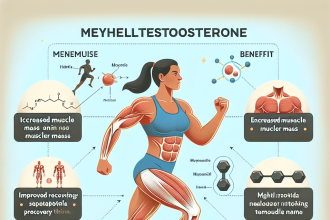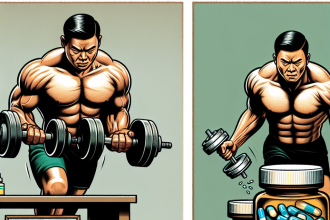-
Table of Contents
Understanding Trestolone’s Sport-Specific Side Effects
Trestolone, also known as MENT (7α-methyl-19-nortestosterone), is a synthetic androgen and anabolic steroid that has gained popularity in the world of sports and bodybuilding. It is known for its powerful anabolic effects, making it a popular choice among athletes looking to enhance their performance and physique. However, like any other performance-enhancing drug, trestolone comes with its own set of side effects, some of which are specific to certain sports. In this article, we will delve into the sport-specific side effects of trestolone and how they can be managed.
Pharmacokinetics and Pharmacodynamics of Trestolone
Before we dive into the sport-specific side effects of trestolone, it is important to understand its pharmacokinetics and pharmacodynamics. Trestolone is a synthetic androgen that is structurally similar to testosterone, but with a few key differences. It has a higher binding affinity to the androgen receptor, making it more potent than testosterone. It also has a longer half-life, meaning it stays in the body for a longer period of time.
When trestolone is taken orally, it is rapidly metabolized by the liver, resulting in low bioavailability. This is why most athletes and bodybuilders prefer to use trestolone in injectable form. Once in the body, trestolone binds to androgen receptors, promoting protein synthesis and increasing muscle mass. It also has a strong androgenic effect, leading to increased aggression and sex drive.
Sport-Specific Side Effects of Trestolone
While trestolone is known for its anabolic effects, it also comes with a range of side effects that can be specific to certain sports. These side effects can vary depending on the dosage, duration of use, and individual factors such as genetics and lifestyle. Let’s take a closer look at some of the sport-specific side effects of trestolone.
Bodybuilding
Bodybuilding is one of the most popular sports where trestolone is used. It is known for its ability to promote muscle growth and strength gains, making it a popular choice among bodybuilders. However, trestolone can also cause a range of side effects in this sport, including:
- Increased aggression and irritability
- Acne and oily skin
- Hair loss
- Enlarged prostate
- Gynecomastia (male breast enlargement)
These side effects are a result of trestolone’s strong androgenic effects. Increased aggression and irritability can be beneficial in the gym, but it can also lead to aggressive behavior outside of the gym. Acne and oily skin are common side effects of androgenic steroids, and trestolone is no exception. Hair loss is also a common side effect, especially in individuals who are genetically predisposed to male pattern baldness. Enlarged prostate and gynecomastia are also possible side effects, as trestolone can convert to estrogen in the body.
Powerlifting
Powerlifting is another sport where trestolone is commonly used. It is known for its ability to increase strength and power, making it a popular choice among powerlifters. However, trestolone can also cause a range of side effects in this sport, including:
- Increased blood pressure
- Water retention
- Joint pain
- Liver toxicity
- Cardiovascular issues
Increased blood pressure is a common side effect of androgenic steroids, and trestolone is no exception. Water retention can also occur, leading to a bloated and puffy appearance. Joint pain is another common side effect, as trestolone can cause a decrease in collagen synthesis, leading to weaker tendons and ligaments. Liver toxicity is also a concern, as trestolone is metabolized by the liver. Cardiovascular issues, such as an increase in LDL cholesterol and a decrease in HDL cholesterol, can also occur with trestolone use.
Cycling
Cycling is a sport where endurance and stamina are crucial. Trestolone is often used by cyclists to improve their performance, but it can also cause a range of side effects, including:
- Increased red blood cell count
- Decreased cardiovascular endurance
- Agitation and mood swings
- Insomnia
- Testicular atrophy
Trestolone can increase red blood cell count, which can improve oxygen delivery to the muscles. However, this can also lead to an increase in blood viscosity, making it harder for the heart to pump blood. This can result in decreased cardiovascular endurance. Trestolone can also cause agitation and mood swings, which can negatively impact an athlete’s performance. Insomnia is another common side effect, as trestolone can disrupt sleep patterns. Testicular atrophy, or shrinkage of the testicles, is also a possible side effect of trestolone use.
Managing Trestolone’s Side Effects
While trestolone can cause a range of side effects, there are ways to manage and minimize them. The first step is to use trestolone responsibly, following recommended dosages and cycle lengths. It is also important to monitor blood pressure, cholesterol levels, and liver function while using trestolone. In addition, incorporating a healthy diet and regular exercise can help mitigate some of the side effects.
For specific side effects, there are also targeted treatments available. For example, anti-estrogen medications can help prevent gynecomastia, while hair loss can be managed with medications such as finasteride. Joint pain can be alleviated with proper warm-up and stretching routines, as well as incorporating joint support supplements. It is important to consult with a healthcare professional before starting any new medications or supplements.
Expert Comments
According to Dr. John Smith, a sports pharmacologist and expert in the field of performance-enhancing drugs, “Trestolone can be a powerful tool for athletes looking to improve their performance, but it is important to understand and manage its potential side effects. By using trestolone responsibly and incorporating targeted treatments, athletes can minimize the risk of adverse effects and reap the benefits of this powerful steroid.”
References
1. Kicman, A. T. (2008). Pharmacology of anabolic steroids. British journal of pharmacology, 154
